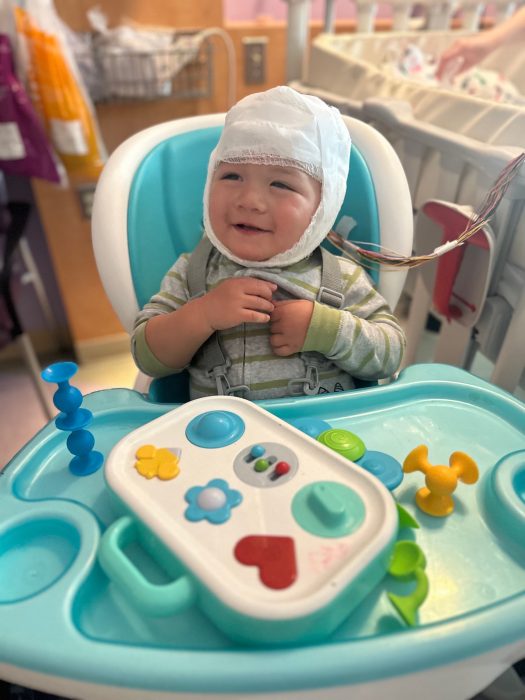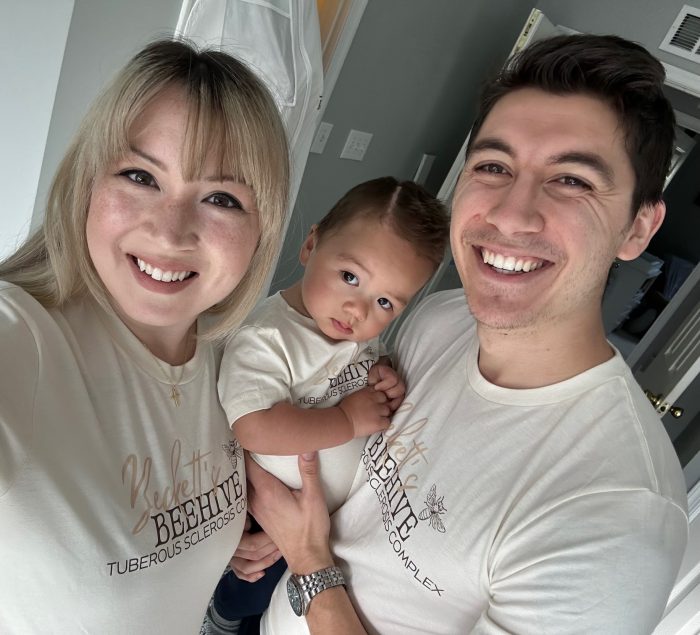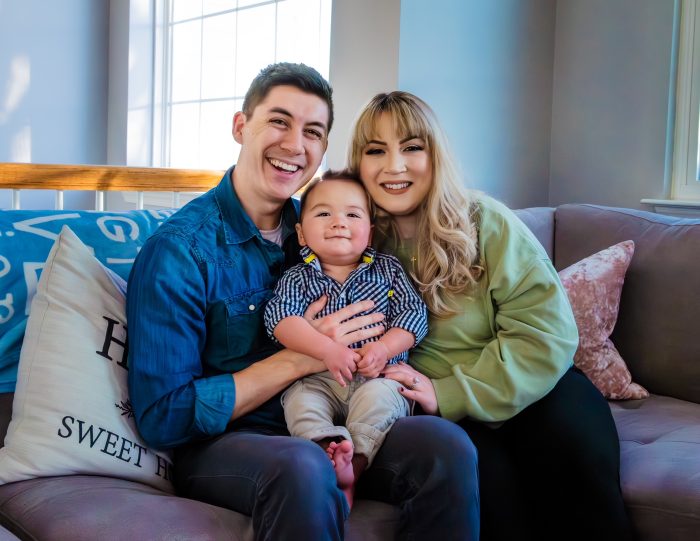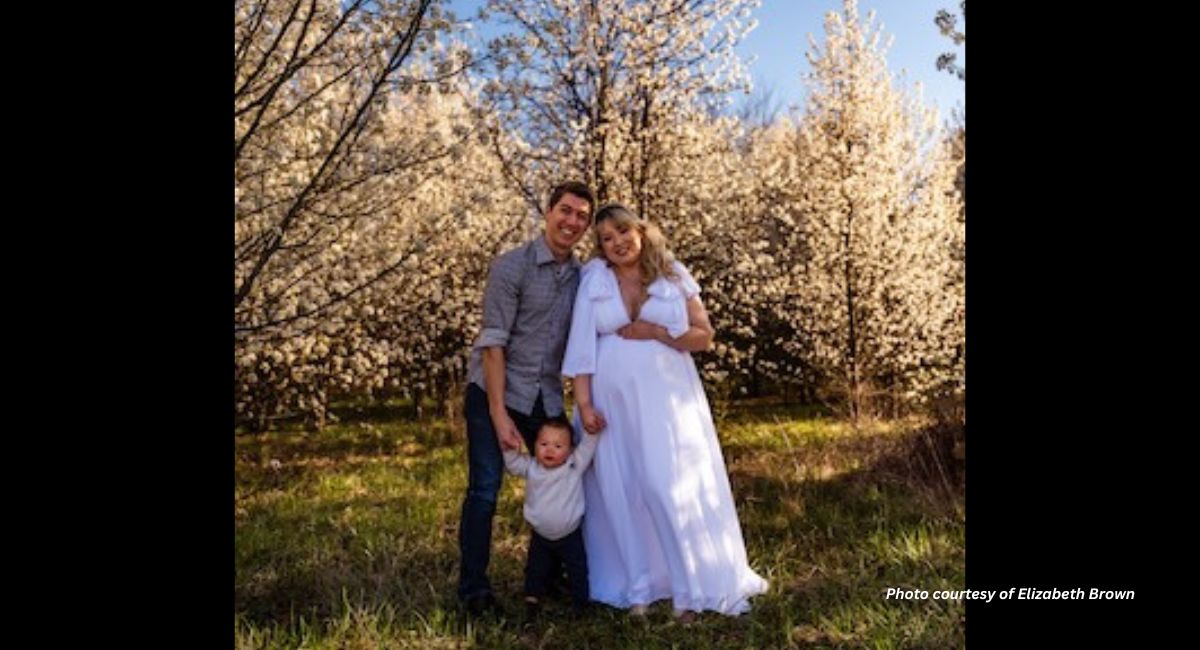There’s often a hidden eugenic expectation placed on the parents of a child who has been diagnosed with a genetic health condition. After Elizabeth Brown’s son, Beckett, was diagnosed with tuberous sclerosis complex (TSC), she and her husband, Nicholas, experienced that discrimination first hand.
Shortly after being admitted to a hospital in Texas for Beckett’s health concerns, the couple discovered they were expecting their second baby. They were thrilled but blissfully unaware that they would soon be meeting with doctors who would suggest they abort their baby.
“I went through a lot of miscarriages after we got married and were trying to get pregnant,” Elizabeth told Live Action News. “We lost four babies. When I got pregnant with Beckett, it was very textbook, no complications.”
Throughout the uneventful, happy pregnancy, doctors never noticed anything on ultrasounds or tests that hinted at there being concerns with Beckett’s health. He was born at 39 weeks and everything appeared fine. But at about five weeks old, Beckett began having “events” that left his parents worried and confused. Concerned that Beckett wasn’t breathing during these events, on Thanksgiving Day of 2022, they took him to the emergency room. The doctor there said Beckett’s vitals were good and sent the family home with instructions to bring him back in if it happened again.

Beckett. Photo courtesy of Elizabeth Brown.
A diagnosis for Beckett
That night, the young parents struggled to sleep. As the days went on, Beckett continued to have these events in which his eyes would flutter, his face would tense up, and his extremities would stiffen. His parents recorded and logged the episodes for the doctor. Still, the pediatrician wasn’t overly concerned, saying that it could simply be colic or severe reflux. Then, after a lot of back and forth, the doctor finally determined that Beckett may be having seizures and sent him to see a neurologist.
A telehealth visit with the neurologist “began a long journey of advocating for Beckett,” said Elizabeth. He was misdiagnosed for six months as Elizabeth cut foods from her diet – as she was still nursing Beckett – and did whatever she thought might help her son. Doctors determined Beckett had severe silent reflux and Sandifer syndrome, but those diagnoses didn’t sit right with her.
“God was telling me there was still something wrong,” she said. The couple, determined to help Beckett, found a new pediatrician who immediately saw that Beckett was having seizures. At a hospital in Northern Virginia, Beckett finally received the correct diagnosis of epilepsy and a genetic test in May of 2023, confirmed that TSC is what was causing the seizures.

Beckett during testing. Photo couresty of Elizabeth Brown.
TSC is a rare genetic disease that causes noncancerous tumors to grow in different organs including the brain, heart, lungs, kidneys, skin, and eyes. When they grow in the brain, it can cause epilepsy. One in every 6,000 babies is diagnosed with TSC and each will experience varying degrees of symptoms. Some people with TSC can live independently with few symptoms while others will require complex care. No one knows how the condition will affect a person until after they are born.
“You roll with the punches,” said Elizabeth. “And I think that scares people.”
Genetic testing also revealed that Beckett’s father Nicholas has been living with asymptomatic TSC his entire life. Each child that Nicholas has will have a 50% chance of inheriting the genetic mutation that causes TSC. Nicholas explained that TSC follows a dominant inheritance pattern, which means that the mutation only needs to be present in one parent for it to have a chance of being passed down.
Getting Beckett’s diagnosis was “a double-edged sword,” he said, because “now we have an answer but we also have the shock and horror of ‘this is what’s happening with our son.’”

Elizabeth, Beckett, and Nicholas. Photo courtesy of Elizabeth Brown.
A brother for Beckett
In the fall of 2023, while traveling to visit friends and family in Minnesota and Texas, the Browns noticed that Beckett’s seizures were becoming more frequent — 60-100 a day. While in Texas, Beckett stopped breathing during a seizure for such a prolonged time that his lips turned blue, and his parents took him to the emergency room. That’s where Elizabeth and Beckett would stay for the next two and a half months while he underwent two surgeries on his brain. The first surgery actually made the seizures worse, but the second was successful, and Beckett was seizure-free for months.
It was while at that hospital that Elizabeth learned she was pregnant again.
“We were concerned, but we trusted God,” she said. “We wanted to try naturally. IVF was a conversation we had and adoption was a conversation we had. If [the baby] had TSC, we would feel bad, but we felt like God wanted us to try naturally, so we did.”
In mid-December, Beckett was seizure-free and the family was back home in West Virginia. Elizabeth secured an OB/GYN and prepared for what would be considered a high-risk pregnancy because of the 50% chance that the new baby — Baylor — would also have TSC. At about 17 weeks, she went to her first appointment with the maternal fetal medicine (MFM) geneticist. She wanted to learn about any options she had to test the baby in the womb for TSC so that she could prepare better for his birth. A blood test, she learned, would be 91%-96% accurate while an amniocentesis would be 100% accurate in diagnosing TSC, but it also carried a risk of miscarriage, so she refused the amnio and opted for the blood test instead.
That’s when doctors began suggesting abortion if the test showed the baby did have TSC.

Nicholas, Beckett, and Elizabeth. Photo couresty of Elizabeth Brown.
Doctors suggest the ‘option’ of abortion
“The geneticist sat me down; my stepmother-in-law was with me. The geneticist said, ‘So I just wanted to know what options you were thinking if this baby has TSC. A lot of the other couples, when they find out their child may have a genetic condition like Down syndrome or TSC or some other condition they can’t medically help, sometimes they consider terminating the pregnancy.’ I said, ‘Absolutely not. I have a baby with TSC at home and he’s absolutely perfect. I can’t believe you would ask me that,’” said Elizabeth.
The geneticist said it was an internal policy to ask, meaning the medical establishment or hospital system requires that doctors talk to parents about aborting their baby after they receive a diagnosis or even if there is the possibility of a diagnosis.
Elizabeth told the doctor never to ask that question again. When she returned to the MFM for an ultrasound at 20 weeks, the doctor asked if she had received her blood test results yet, and when Elizabeth said that she hadn’t, the doctor began to talk about how “complex” TSC is and asked if she had “thought about any options.”
“I said, ‘Are you talking about me killing my baby?’ And he said, ‘Yes, terminating the pregnancy.’ I said, ‘You mean killing my baby. My husband and my son are perfect and have TSC.’ I was so shocked and saddened.”

The Browns are expecting baby Baylor in June. Photo courtesy of Elizabeth Brown.
After that day, though she had to return to the MFM to check on the baby, Elizabeth kept the appointments as brief as possible. Blood tests showed that baby Baylor, who is due in June, does not have TSC.
“I’m still going to have him genetically tested when he’s born just to double check,” said Elizabeth. “But not because I’m scared he’ll have TSC, but to prepare him if he does, to make sure he has a good team and good support system. So it’s to prep him and prep myself.”
Though Beckett is a bit behind developmentally and is still dealing with seizures, he’s doing better thanks to a proper diagnosis and treatments including occupational therapy, physical therapy, and speech therapy. It is possible that he will need another surgery in the future to remove any cortical tubers (a common type of brain tumor) or other tumors that grow, but he has a normal life expectancy and is expected to live a full life.
The Browns have become involved with the TSC Alliance, working to raise funds for better treatments, research, and a cure. Elizabeth also talks to other moms in TSC parenting groups, encouraging them to advocate for their children and even advocating against abortion.
Her biggest advice for parents is to “hold onto hope and faith because even if it seems like it’s getting worse, there’s light at the end of the tunnel.”







